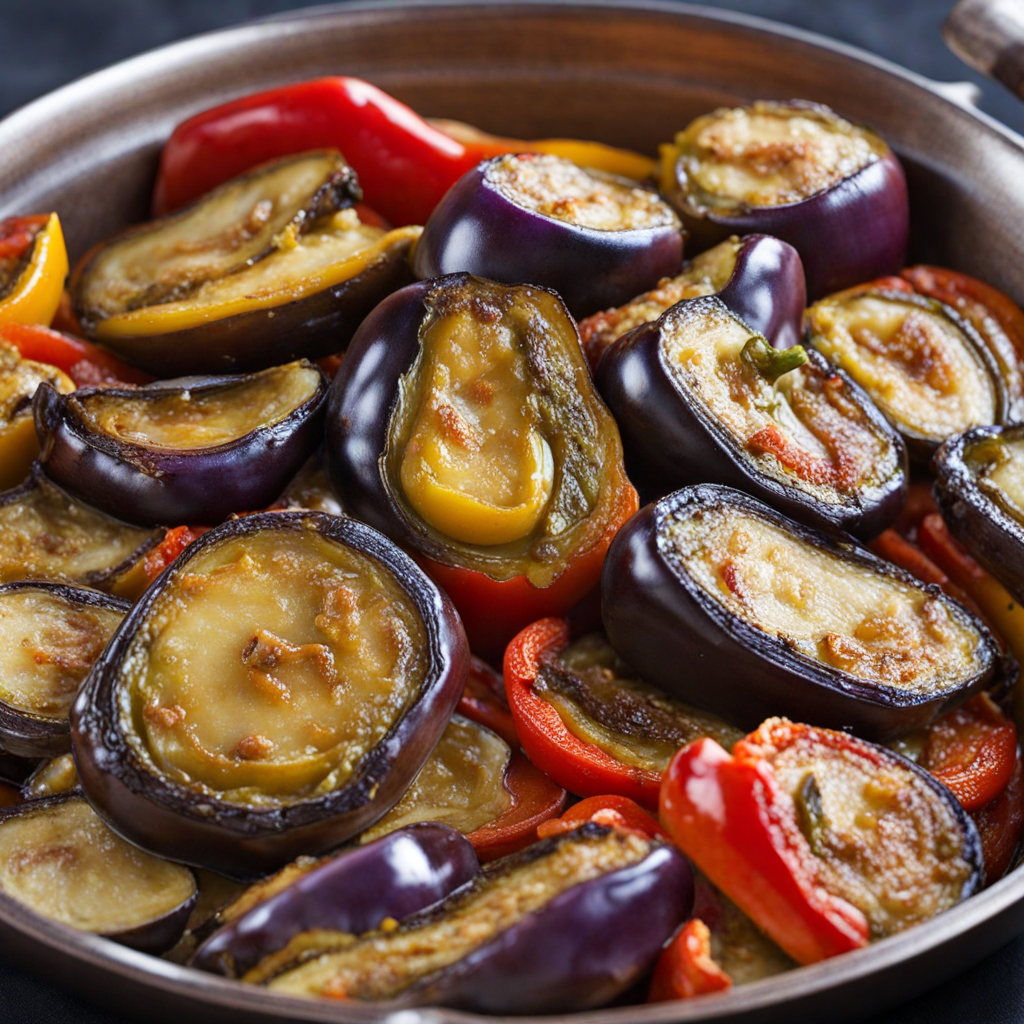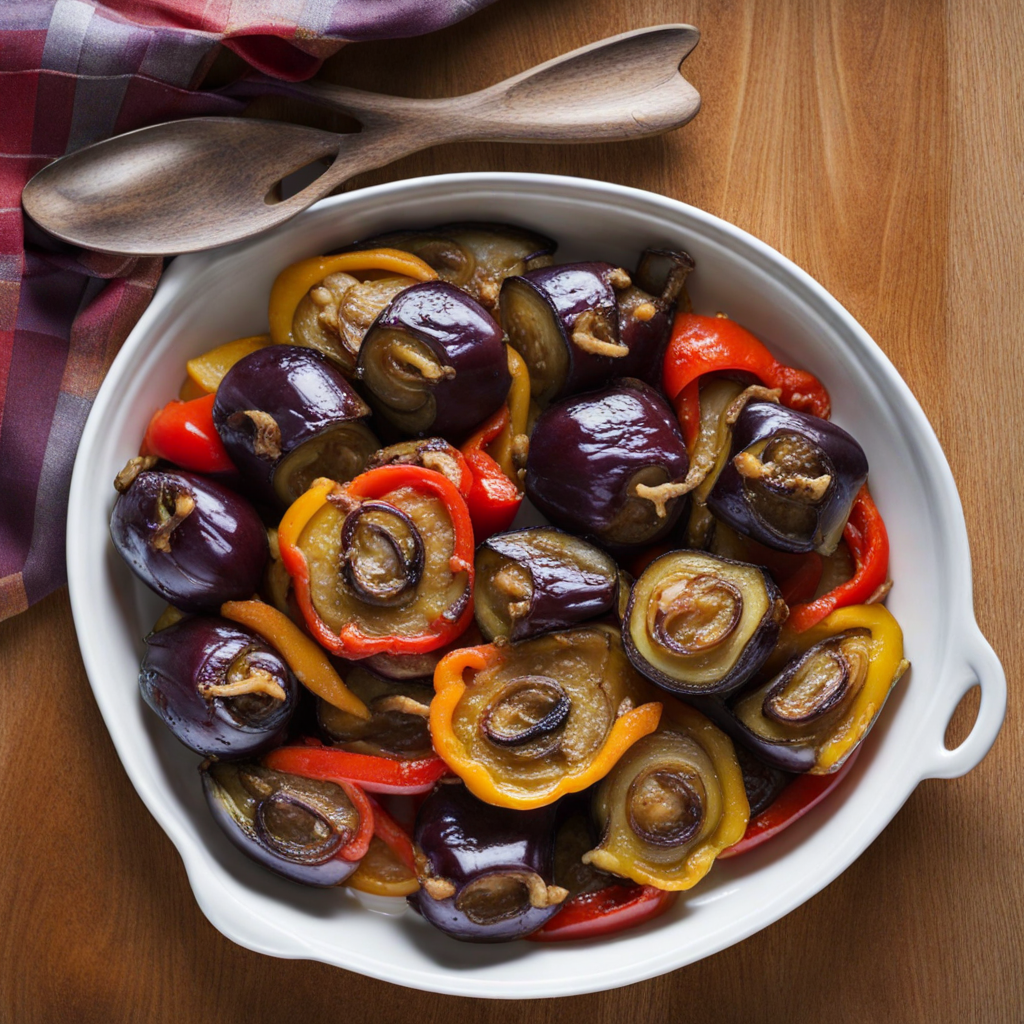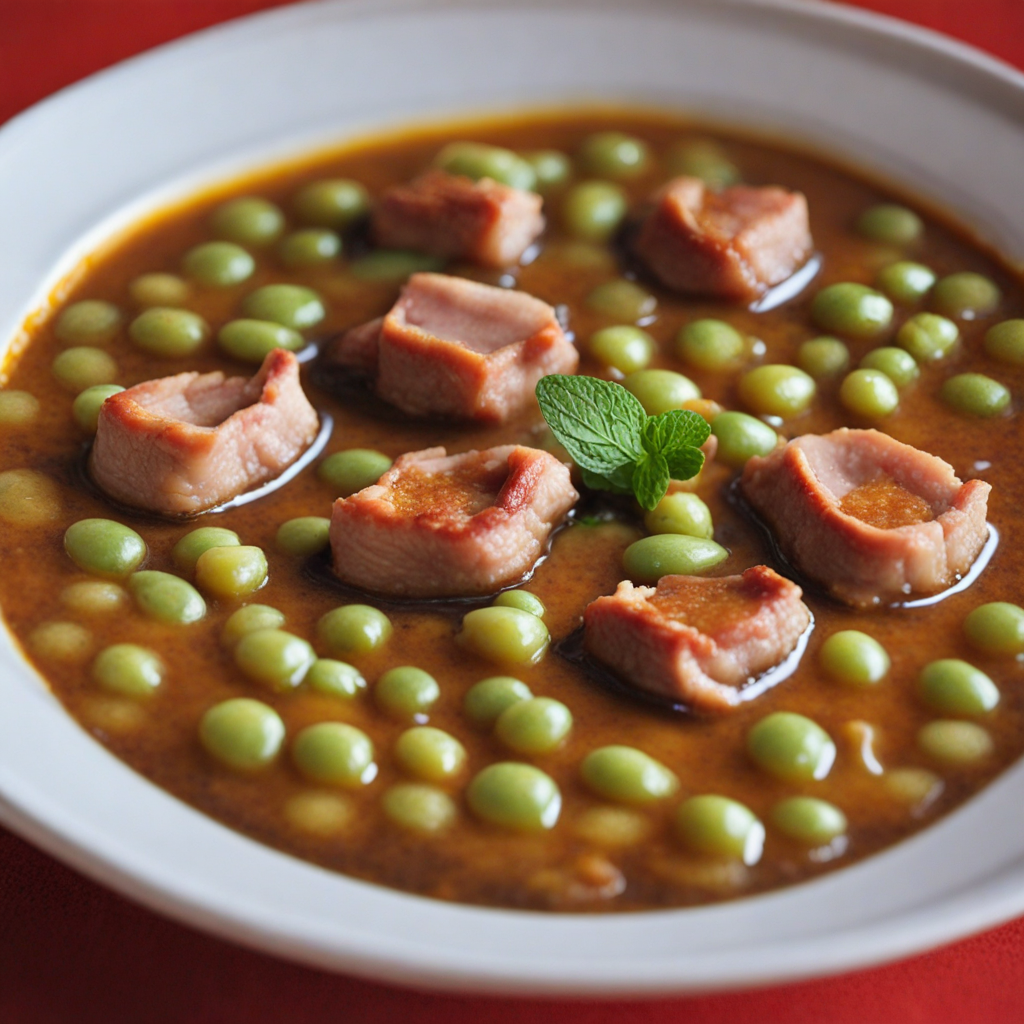Escalivada
Escalivada is a traditional dish hailing from the Catalan region, including the principality of Andorra, celebrated for its vibrant flavors and rustic charm. At its core, escalivada features a medley of roasted vegetables, primarily eggplant, red peppers, onions, and tomatoes. These vegetables are charred to perfection over an open flame or in a hot oven, which enhances their natural sweetness and imparts a smoky depth. The dish is typically served warm or at room temperature, allowing the flavors to meld beautifully while maintaining the vegetables' tender texture. Once the vegetables are roasted, they are peeled and sliced, then drizzled with high-quality olive oil and seasoned with salt. This simple preparation highlights the freshness of the ingredients, allowing each bite to reveal the rich, smoky flavor of the charred veggies combined with the fruity notes of the olive oil. Often, escalivada is accompanied by crusty bread, which acts as a delightful vehicle for savoring every morsel. It can be served as a tapa, a side dish, or even a main course, showcasing its versatility in various culinary contexts. In addition to its straightforward yet satisfying taste, escalivada is often garnished with olives or anchovies, which add an umami punch that complements the sweetness of the roasted vegetables. The dish reflects the Mediterranean influence on Andorran cuisine, emphasizing the use of fresh, local produce and traditional cooking techniques. For anyone looking to explore new flavors, escalivada offers a delectable journey into the heart of Andorran gastronomy, inviting you to experience the warmth and richness of its culinary heritage.
How It Became This Dish
The Rich Tapestry of Escalivada: Andorra's Grilled Vegetable Delight #### Origins and Historical Roots Escalivada, a traditional dish from the Catalan region of the Iberian Peninsula, holds a cherished place in Andorran cuisine. Its name derives from the Catalan verb "escalivar," meaning "to cook over embers." This culinary technique reflects the rustic, hearty lifestyle of rural communities in the Pyrenees, where Andorra is nestled. The dish is characterized by its simple yet vibrant ingredients: eggplant, red peppers, tomatoes, and onions, all grilled over an open flame until they become tender, smoky, and infused with the essence of the fire itself. The precise origins of escalivada are somewhat nebulous, as it is a dish shared across various regions in Spain, particularly in Catalonia and Aragon. However, its roots can be traced back to ancient agricultural practices, where communities relied on seasonal produce. The practice of grilling vegetables over an open flame likely originated out of necessity, where farmers and shepherds would prepare meals using the available resources while tending to their livestock. #### Cultural Significance Escalivada is more than just a dish; it embodies the spirit of Andorran culture and the broader Catalan traditions. It is a celebration of the land and its bounty, showcasing the region's agricultural heritage. The dish is often prepared during the summer months when vegetables are at their peak, emphasizing the importance of seasonality in Andorran cooking. In Andorran households, escalivada is a staple at family gatherings and festive occasions. It is often served as a tapa, appetizer, or side dish, accompanied by crusty bread and local cheeses. The communal aspect of sharing food is deeply ingrained in Andorran customs, and escalivada serves as a bridge between generations, connecting the past with the present. The dish also plays a role in local celebrations and festivals, where it is featured prominently. For instance, during the annual "Fira de Sant Ermengol," a festival dedicated to the patron saint of Andorra, escalivada is often showcased alongside other traditional dishes, highlighting its cultural relevance and appeal. #### Development Over Time As with many traditional dishes, escalivada has evolved over time, adapting to changing tastes, cooking methods, and cultural influences. While the basic preparation remains consistent, modern interpretations often incorporate new elements. For instance, some chefs experiment with the addition of herbs, spices, or even cheeses, enhancing the dish's flavor profile while staying true to its roots. In recent years, the rise of culinary tourism in Andorra has brought escalivada into the spotlight, allowing it to reach a broader audience. Visitors to the principality are often introduced to escalivada through local restaurants, where it is presented with a contemporary flair. This exposure not only helps preserve the traditional recipe but also encourages chefs to innovate while respecting the dish's heritage. Moreover, escalivada's adaptability makes it a perfect canvas for fusion cuisine. Chefs have begun to incorporate elements from various culinary traditions, leading to exciting new interpretations. For example, some prepare escalivada with a Mediterranean twist, using olives or capers, while others may blend it with Asian flavors, adding sesame oil or ginger. This evolution reflects a broader trend in gastronomy, where traditional dishes are reimagined to appeal to modern palates. #### Ingredients and Preparation The core ingredients of escalivada are simple yet crucial to its identity. The eggplants, red peppers, tomatoes, and onions are often sourced from local farms, emphasizing the importance of fresh, seasonal produce. The preparation process is as much an art as it is a science. The vegetables are first charred over an open flame until their skins blister and blacken, imparting a smoky flavor that is characteristic of the dish. After grilling, they are often peeled, sliced, and arranged in a vibrant display, sometimes drizzled with olive oil and seasoned with salt. While the traditional recipe remains popular, contemporary variations may include additional ingredients such as zucchini or even roasted garlic. Some chefs choose to serve escalivada warm, while others prefer it at room temperature, allowing the flavors to meld and develop further. #### Escalivada in the Modern Culinary Scene In the 21st century, escalivada has found its place not only in traditional Andorran kitchens but also in the broader culinary landscape of Spain and beyond. As a dish that speaks to the values of sustainability and locality, it aligns perfectly with contemporary dining trends that prioritize farm-to-table practices. The emphasis on fresh, seasonal ingredients has led many chefs to embrace escalivada as a staple on their menus, often presenting it as a highlight of the summer season. The popularity of vegetarian and vegan diets has also contributed to escalivada's resurgence. As more people seek plant-based options, this smoky, flavorful dish offers a satisfying alternative that is both nutritious and delicious. Its versatility allows it to be paired with a variety of proteins, making it an ideal accompaniment for everything from grilled meats to fish dishes. #### Conclusion Escalivada stands as a testament to the enduring legacy of Andorran and Catalan culinary traditions. Rooted in the agrarian lifestyle of the Pyrenees, this dish encapsulates the essence of the land and the communal spirit of its people. As it continues to evolve, escalivada serves as a reminder of the importance of heritage and the role that food plays in shaping cultural identity. In a world increasingly focused on globalization, escalivada remains a beloved symbol of Andorra's unique culinary heritage. Its smoky, robust flavors and simple preparation celebrate not only the ingredients but also the traditions that have been passed down through generations. As diners savor this iconic dish, they participate in a rich tapestry of history and culture that transcends time, reminding us that food is not just sustenance but a powerful connector of people and stories.
You may like
Discover local flavors from Andorra







